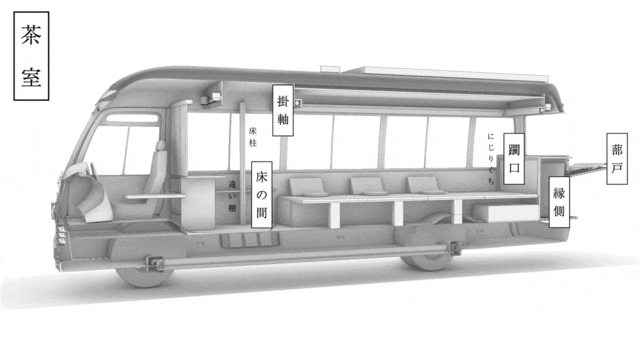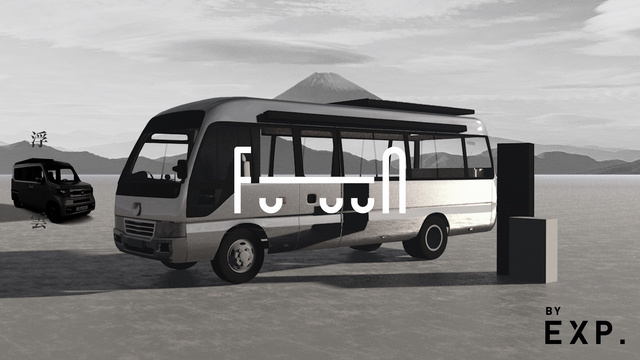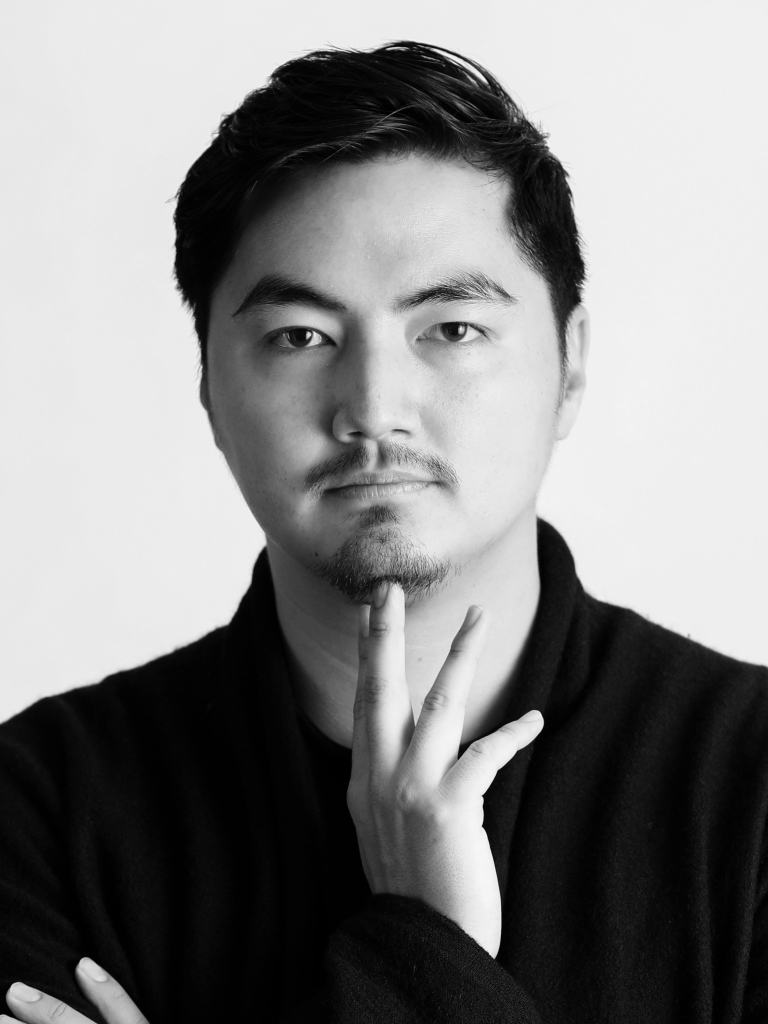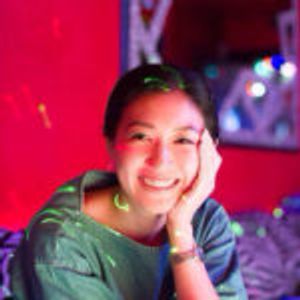Joe Jun Liao, an entrepreneur originally from Hong Kong, is building a network to improve personal wellness and the common good in Hong Kong, Thailand, and Japan. While studying architecture at Harvard Graduate School of Design, he started to think about how designing spaces to create invaluable experiences could lead to a mindful society and help solve social problems. After working as a software engineer in California, he founded Hong Kong’s first capsule hotel, SLEEEP, with his childhood friend and entrepreneur Alex Kot. They now have three hotels in Hong Kong and one in Bangkok before Covid-19, which was unfortunately closed down during the pandemic. Their goal is for the guests to have a thoroughly relaxing time. The hotels are equipped with IoT systems that modulate lighting and sound environments for each individual guest to enhance the quality of their sleep as well as awakening. The space is designed with fastidious attention to detail to create a relaxing and comfortable environment.
In 2020, Jun moved from Hong Kong to Japan with his family. At the start of the Corona Pandemic, he launched an online meditation community UnXe partnering with Toryo Ito, a Buddhist monk at Kenninji Temple Tacchu Ryosokuin in Kyoto. The meditation, which is delivered in Japanese, Chinese, and English, attracts participants not only from Japan but also from Europe and the United States, despite the significant time difference. The following year, Jun developed FUUUN, a camper van that combines meditation and transportation with his business partner, a seasoned Japanese business counterpart, and Mr. Ito. When Jun designed the interior of the van, he had the image of a floating cloud in mind. He calls it a “moving tea room,” inspired by traditional Japanese tea rooms and houses. The main area is transformable between seatings around a long table to flat tatami mats, to even a movie room. The van can be used for a variety of purposes from working holidays to minimalist-style camping, mobile events to traveling with family and friends. It also offers a completely new style for meditation and tea ceremonies. The three “U”s in FUUUN stand for: “Undefined,” vibrant and full of possibilities, as expressed by the transformable space; “Unattached,” sharing the joy without obsessing over ownership, as expressed by the careful curation of quality over quantity; “Unlimited,” the sky is connected beyond all boundaries, as empowered by the off-grid solar charging system. It signifies the values in Zen philosophy, combined with state-of-the-art technology.
In recent years, the lifestyle of minimalists, who live only with necessities, is drawing more attention. And, there is more focus on how to be present, which is the core notion of mindfulness. We asked Jun about his experience in Zen meditation and how he filters these values from Zen philosophy into his diverse ideas and projects.
Since school days, Jun pursued his interests in Zen. He eventually meets Toryo Ito, a Zen monk.
−−How did you choose Fujinomiya as a base for FUUUN?
JL: Fujinomiya is my wife’s hometown. I come here every one-and-a-half week. My wife is Japanese and is from Fujinomiya. When I first came to visit her while we were still boyfriend and girlfriend, I was proud of myself as a Hong Kong person who traveled there as most tourists never go to smaller cities and mostly only visit big cities like Tokyo and Osaka. I fell in love with the nature here and the simple lifestyle. I stayed with her for a little bit and found the view of Mount Fuji stunning. You can see Mount Fuji from everywhere, every day in Fujinomiya, and see how the clouds change. It was beautiful. I also got to do farming with my now father-in-law in the front yard. All of these things left a strong impression on me. When we moved to Japan to build a life here, we decided that we would live mostly in Tokyo as our son would go to school there, but we maintained a small base in Fujinomiya so that we could visit often.
−−I learned that there were meditation sessions in FUUUN facilitated by Mr. Toryo Ito, a Zen monk. I also read that you practiced with him in his Zen temple for six weeks as an artist-in- residence. How did Mr. Ito and meditation influence your life?
JL: I’m very much influenced by him. I became interested in Zen when I was a middle school student in Hong Kong. I used to pick up random books from the library and read them. One of them was about Zen and I got interested in it. After that, I would revisit my interest in Zen throughout my life. When I traveled, I would always seek out meditation centers to see if I could visit them. It was a little pilgrimage for me. When I met Toryo-san, I was leading my team from Hong Kong to Kyoto to learn about Japanese culture. The trip was an opportunity for them to have exposure to a culture known for its deep roots and sensibility including hospitality, tea ceremony, and Japanese aesthetics. During that trip, we attended a meditation class led by Toryo-san. I immediately liked the way he taught meditation. He made it easy for the participants to understand and I asked for this contact. Later, he came to Hong Kong for Art Basel, and we met again and had lunch together. As we spent more time together, we got to know each other. Then I was comfortable enough to ask him if I could stay at his temple. He was hoping to organize an artist-in-residence program for some time and immediately replied that my stay would motivate him to launch the program. Then, Toryo-san started the program, and I became the first participant. The program lasted for six weeks. We took many morning walks around 4:30 or 5 am. We chanted the sutra together and I would be tapping the wooden drums “mokugyo.” During the morning walks, we visited the mountains and the rivers in Kyoto and had deep conversations about philosophy, life, art, and Zen. We developed a mutual understanding. After I left the temple, I started a business in Japan. It was a natural thing for me to ask him to join me.
−−I guess that led to the launch of the global online meditation community in 2020 by you and Mr. Ito. What is the makeup of the participants? And how do they find you?
JL: Currently, 70 to 80% of the participants are Japanese. I believe most of them have some international exposure. We also have participants from Singapore and Hong Kong, and some of them are from Europe. I would say that the Europeans are the most hardcore participants because they have to stay up until 1 or 2am in their time zone to participate. There are some Americans, but they come and go more frequently. I think it’s probably because the gathering falls onto their Friday evening and it’s hard to block every Friday evening for meditation. The time zone can make it harder for some of the participants. And, I think they usually find out about UnXe through Google searches and social media.
−−Mindfulness and meditation are popular in American culture. What do you think is the appeal and uniqueness of UnXe for your audience? And why do they keep on coming back to it?
JL: I think there are a couple of unique points about UnXe that are unlike any other meditation groups that we know. I’m sure I don’t know every meditation group out there, but we just do what we think is right. The first point is providing high-quality interpretation for the group. We try to make everything that we discuss in the group bilingual —at least in Japanese and English. If comments were in English, we would interpret them in Japanese, and we do the same vice-versa. During the meditation, we also provide interpretation in Cantonese to open up to the Chinese-speaking population. Some people are not particularly interested in learning or understanding Cantonese, but they seem to enjoy listening to it. When they hear the same sentences in different languages, it makes them aware of how certain words could sound in a different language. I think it subconsciously enhances intercultural understanding or makes people appreciate other languages. I think a meditation experience in a trilingual setting is unique. The second point is that our guided meditation incorporates visualization and coaching as a way to inspire the participants. Toryo-san is good at that. Some groups sit for 15 minutes together in silence, which is fine as a method. When we meditate in a temple and sit still for 15 minutes, we pay attention to the surroundings, listen to the birds and the wind blowing through the trees. It’s a shared experience. In the beginning, when we were sitting together via Zoom, we asked everyone to keep their microphones open, and listened to the background sounds of other participants. However, it turned out to be chaotic, and the internet connection was not necessarily good. Then we had to mute everybody. When we do that, we lost the shared experience. You just listen to the sound of your room. We reimagined the space and came up with the idea of going through the shared experience with certain topics or themes.
−−Could you elaborate on how you lead this part of the meditation?
JL: Sure. Under each theme, we split into four different steps of digging deeper into each theme that we chose. We start with exploration and move on to expression, experiment, and expansion. Towards the end of each session, we open up the floor, and people can ask questions to each other and share their successes or challenges. We also sometimes do live posts so people can answer questions and see the distribution of answers. It’s interesting to see how people respond differently to the same question. These little techniques are for a fun business meeting, but we mixed them with Zen wisdom and mediation, which makes our experience unique. Ultimately, UnXe is designed to help people break-through the precepts about a particular theme and bring new insights into their everyday lives.
As a student of the Japanese language, Jun started to wonder what “ki” is all about.
−−When you hold the UnXe gatherings, have you found any difference in the way the Japanese and foreigners think about meditation and mindfulness?
JL: That’s a great question. Before I try to make generalized statements, I can pick some examples. From there, maybe, we can deduce certain trends. I find that some European and American participants are more expressive. We ask the question. We encourage them to either type the answer in the chat window or unmute themselves and speak up. Most of the time the people who speak up are non-Japanese. The gathering is made up of a group of strangers. You have no idea where most people are from and who they are. It takes some courage to speak up. That’s one trend I noticed in the gatherings. In terms of mindfulness, people outside of Japan may experience more novelties even if it was just a 10-minute guided mindfulness meditation. Compared with the Japanese participants, who certainly know where Kyoto is and they have probably seen a monk before, so it’s a bit more normal for them. When people experience novelties, it’s easier to notice differences, which allows them to be more mindful. That’s my quick theory.
−−Do you sense that the ethos of Buddhism is incorporated in the daily lives of Japanese?
JL: I think that Buddhism has influenced Japanese culture significantly. I was not brought up in Japanese culture, so I come in as an observer. One thing that I think all people who learn Japanese would ask is what is “ki,” which is a word that is used a lot in Japanese. (Note: “ki” could be translated in many ways depending on the context. Some of the primary translations are air, mind, atmosphere, and mood) “ki wo tsukeru” means to be careful. “kuuki wo yomu” is to read the overall mood of others in a certain setting. There are so many words that use “ki” and it has a meaning. However, if you ask the Japanese what it is, they say they don’t know. In my opinion, “ki” is mindfulness. It is everywhere, and it’s just about whether you notice it or not. In Daisetsu Suzuki’s book, I believe he also talks about it. To be good in meditation or to be enlightened is to see that “air” goes through the inside and outside of yourself freely. To me, that’s when mindfulness has reached a certain state where you can be aware of yourself and context at the same time. And, it’s as if you don’t feel there’s a wall between who you are and your surroundings. That’s when the ego dissolves. That’s how I interpret all these things, but you are not supposed to think through them logically. Unfortunately, my logical training is strong so I am inclined to analyze things. So please take my “interpretation” with a grain of salt.
−−Having established your life and business in Japan, what are the challenges in dealing with Japanese culture?
JL: I think I’ve been quite lucky in the past two years. After moving here with my wife, I asked for permission to go away for six weeks. I went to the Zen temple where I had the agreement with Toryo-san. I got to experience Kyoto from a unique perspective living in a Zen temple and going out every day. After that, I moved back to Shizuoka, where my wife was spending time with her family, and then we moved to Tokyo. I lived in three different locations. I could see that each region has a slightly different culture. As for Japanese culture, the Japanese, in general, have high sensibility, which ties to the fact that they can read the mood—reading “ki,” “kuuki wo yomu.” Everybody is sensitive to how a person behaves, speaks, and looks at other people. It trained me a lot. I became much more aware of these things after moving to Japan. It’s a challenge for me, but I also appreciate the natural environment to enhance my sensibility in behaviors.
−−What do you think are the challenges for your other projects?
JL: I think the overall greatest challenge for me is communication. In this world, everybody is bombarded with information. It’s hard to talk about anything deep, I think. It takes a long time to get to that level. If you think the project is deep, you have to be able to break it down and chop it into small pieces so that you can catch people’s attention within 10 seconds and slowly bring them closer with the hope that they would give you more attention or more opportunities for you to communicate. The world is now filled with people and projects who are good at hooking people’s attention. Maybe the projects are empty inside or even fake, but they’re good at drawing attention. For most people, that becomes such an annoying challenge. People need to make a judgment. As for our work, I believe we have good intentions and we put a lot of effort and resources into building the foundation of what we do. While competing with more appealing projects, I find it challenging to communicate all the values of our projects. I never want to lie and I don’t want to overstate what we do. We just have to be honest and persistent in communicating and hopefully, amid the noise, some people will discern the small sound that we’re making.
With UnXe, we run it almost as a non-profit even though we are not a charity organization. We are continuing it because we think the community members are benefiting from it. It’s also fun and we believe that it is something that would help people feel less stressed in an urban environment during this particular period with lock-downs and unknowns and all kinds of extra stress. As Gandhi said, “We have to be the change we want to see in the world.” That’s my guiding principle of all actions.
And the change we certainly want to see, is a world without wars, a world of sustainable peace. This is more relevant now as we all are witnessing the horrors of war. We must do what we can: We communicate through our actions, one small step at a time.
Joe Jun Liao
Born in Hong Kong. Bachelor of Design | Media Arts from UCLA and Master of Architecture from Harvard University. In 2016, founded the technology venture SLEEEP as well as a capsule hotel of the same name, focusing on the essential activity of life. FUUUN is an extension of that philosophy which is now transcended to EXP. weaving all the experiences together; Preferred to be called Jun (second character of Chinese name), also goes by the artist name Jun Rivers when producing expressive works.
FUUUN





